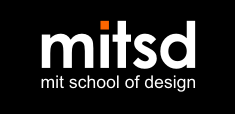What is Design?

A good designer should be a good artist, a good technocrat, a logical thinker, a practical person who can correlate technology with innovativeness at reasonable cost. A designer should deliver the goods to the society in most economical way and in certain time frame. Design Institutes in India and across the world reflect a diverse spectrum of economic, regional and social dynamics. Several great traditions in design education continue to reflect regional aspirations while at the same time striving to make them a part of the modern world.
Nowadays, Design colleges in India are breaking regional barriers and crossing continents in search of new sensibilities, alternative methodologies and collaborative opportunities. Rapid advancement in the field of Information technology has led to the emergence of the knowledge economy as the new powerhouse. In this context of design, Institutes in India should address the new and emerging socio-cultural and economic aspects. Design courses in India are very different in their pedagogy, approach and application as compared to the conventional professional courses. Design schools in India will soon be recognized as the breeding grounds of future leaders.
The new world order now influences a country's economic development. One of the driving forces behind a nation's growth is the availability of well-trained design work force. Design schools in India have an important role to play in this path of economic development. On the backdrop of today's knowledge economy, there is a growing appreciation of the value addition and an intangible role that design can play in harmonious economic growth. Design also leads to up-gradation of quality of life and in developing uniqueness and differentiation. Graduates from design schools in India will be important resources who will pitchfork the country to use its culture and tradition as yesterday's innovations to create new value chain for the future. There are increasing demands on design courses in India to play a key role in the domains that were traditionally considered the forte of technology and management. Hence, design colleges in India should adopt a holistic approach about development.
Design colleges in India create a bridge between Human Development, Technology and Industry of a country. Therefore, design courses in India should be multi-disciplinary and with convergence of human values, technology and business management. The emergence of new design institutes in India can bring in global competitiveness, good business to Indian industries, creating profits, expands the exports volume multifold, understanding and creating quality of life products for the national and global customer, create and generate a culture of innovation.
Design : Time & Space

In order to appreciate the inherent core concept of Design against its ever changing image, it is important to examine its progress in historical time and geographical space. Design sometimes has been described as one of the youngest professions and one of the oldest human acts.
Though the word design is hardly ever used in this context, historically, every deliberate action of generating perceivable - and tangible elements that characterized the human environment had some form of design process behind it. In the sense it could be called an organic and evolved design process protracted over a length of time. This has been true of all world cultures, including our own.
Art and Design courses are for those who have impeccable creative skills. A degree in art and design would enhance their skills and gets them better opportunities. The boundaries between art and design courses in India are blurred, largely due to a range of applications both for the term 'art' and 'design'. Art connects with people in different ways, because it's interpreted differently. The fundamental purpose of design is to communicate a message and motivate the viewer to do something.
Art and Design courses in India are gaining popularity as Industry and society has started to realize the role Designers can play in shaping the future.
Design As a Global Profession

Internationally the 1980's and 90's saw design being perceived and accepted as a process that may be employed to resolve specific problems of not only production and marketing but also the human environment in general. By the end of the 20th century design has become a truly global activity. Today one almost feels that the core of design activity is straddling two seemingly opposite poles. On the one hand, design should remain a true heir to the global design movement in, the best sense of the word. On the other, it must hold out an equally powerful potential to assist each community and culture to know, experience and express its own identity. This contradiction is in fact only superfluous. It disappears when one learns that the process of solving a design problem cannot even begin unless one has a thorough understanding of the needs of the ultimate user or user group. Not just material needs but equally important, psychological, socio cultural and symbolic needs.
In this first decade of the 21st century design is again poised for a change in its image and complexion. Some say that designers way of thinking will play an important role in influencing the attitudes of leaders and opinion makers not just in design related fields but in other walks of life too. One thing is certain; whatever the nature of the change, it will overwhelmingly depend on how design thinking can affect the lives of those in our country who are still deprived of basic amenities that are essential to make what we call "living with human dignity" possible.
Design Education at MIT Pune Group

MIT Institute of Design, MIT Art Design & Technology University,
Loni, Pune
First Batch in Academic year 2006-07
Programs: B Des - 12 Disciplines, M Des : 14 Disciplines , PhD
Admission: MIT Design Aptitude Test – shortlisted candidates goes through Studio Test + Portfolio + Interview
Webiste: www.mitid.edu.in

MIT WPU School of Design, MIT World Peace University, Kothrud, Pune
First Batch in Academic year 2018-19
Programs: B Des – Product Design, Visual Communication Design, User Experience Design
Admission: Independent institute level procedure
Webiste: www.mitwpu.edu.in/school-of-design

Avantika University, Ujjain, Madhya Pradesh
First Batch in Academic year 2017-18
Programs: B Des – Industrial Design, Communication Design, User Experience Design, Interaction Design, Fashion Design M Des - Industrial Design, Communication Design, User Experience Design, Interaction Design
Admission: MIT Design Aptitude Test – shortlisted candidates goes through Studio Test + Portfolio + Interview
Webiste: www.avantikauniversity.edu.in

School of Design, MIT Academy of Engineering, Alandi, Pune
First Batch in Academic year 2020-21
Programs: B Des ( Affiliated to Savitribai Phule Pune University ) Product Design, Communication Design, User Experience Design
Admission:MAH AAC CET - centralized admission procedure run by Government of Maharashtra
Webiste: https://www.mitsd.edu.in/index.php

